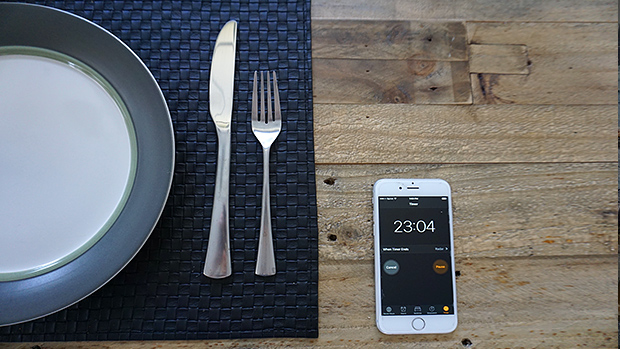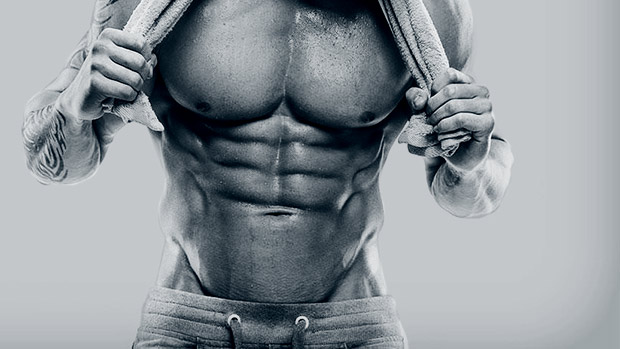To build muscle or prepare to get on stage, bodybuilders will bulk and cut. These phases are dedicated to one goal at a time. Either you're dieting to shed body fat, or you're eating to gain mass.
People love to bash these traditional methods. Many think they're unnecessary or stupid. The rationale is, "Why cut and bulk when you can do both at the same time?"
This is called "recomping" (building muscle while losing fat), and it's possible with many caveats. But what's been even more popular lately is the idea of "gaintaining," which is a term that means gaining muscle while maintaining the same level of body fat.
These methods are the dream, right? Just get jacked without gaining an ounce of fat. Well, unfortunately, that's not as easy to do as you'd think. Bulking and cutting phases are here to stay, and you'll get to a point where they become necessary for further progression in muscle growth.
When Can You Gaintain?
Gaintaining and recomping phases are for beginners. If you're an average Joe who's never lifted before, you can reap the benefits of newbie gains and build a decent amount of muscle. To fuel muscle growth, your body will draw energy from fat stores because you'll likely have plenty.
In fact, you can probably continue like this for up to a year if your genetics are stellar. After that, your chest won't be as saggy, your legs will have some size, your arms will look pretty good, and your abs may even resemble a four-pack in good lighting.
But what now? You can only take advantage of newbie gains for so long, and even then, you can't seem to get that elusive eye-popping six pack. If you want to get six-pack lean, you have to go into a consistent deficit... a cut.
If you want to go further, then say goodbye to maintenance-type phases.
What Happens After That?
So let's say you diet down and drop 10-ish pounds. Your abs are showing, but your physique isn't where you want it to be. You look like you lift, but you're far from looking like your favorite superhero or bodybuilder.
This is where guys will be tempted to keep gaintaining to avoid gaining body fat instead of entering the bulk/cut seasons. I get it. You see your abs for the first time without having to rely on favorable lighting. You don't want to lose that.
And sure, maybe you can gaintain a bit longer if you have some newbie gains to squeeze out, but it will be painfully slow at this point. But if you don't, you'll be spinning your wheels.
Think about it. You may be a lean 130-150 right now. How do you expect to get to a lean 170-180? Do you really think you'll eventually slap on 20 pounds of muscle tissue by eating at maintenance?
You won't. All maintenance does (at this point) is make you that guy at the gym who trains daily but looks the same year after year. If that's the dream, stop reading now. If you're like most people who want further physique improvement, you'll have to start doing bulking and cutting phases.
There's a Science to It
Energy balance dictates how strong the muscle-building signals translate to muscle construction (also known as protein synthesis). These levels are lower at lower energy balances. So if you maintain or cut your whole life in an attempt to keep your abs, your body's maximum muscle-building abilities will be blunted.
Muscle protein synthesis levels are higher during a surplus (1). By packing in a bit more food, you're giving your body an anabolic state from which to build.
As you progress, you'll make your way toward your genetic ceiling. Muscle growth gets incrementally slower, so leveraging the additional anabolic signal from a surplus is key.
Building muscle is also energy intensive. You don't have to be in a surplus, but your body does eat up a lot of energy to construct muscle. This is why beginners with excess body fat can recomp. Their body is drawing from the fat stores to fuel the construction of new muscle tissue.
However, once you're lean, you're near your essential body fat levels. Your body isn't going to draw from the little fat you have to suddenly pile on the 15 extra pounds of back and biceps. There's simply not enough fuel to pay for the cost of building additional muscle mass.
So an energy surplus isn't only advantageous for building muscle; in many cases, it's necessary.

How to Bulk and Cut Optimally
Once you're lean, the only place left to go is up, so start with bulking.
Bulking doesn't mean eating a Vegas buffet daily and turning yourself into a museum of adipose tissue. A good bulk means to eat in a slight caloric surplus of about 300-500 calories.
Here are the general starting guidelines:
- Set your calories to 17 to 20 x your bodyweight.
- Eat 0.8 to 1 gram per pound of body weight daily.
- Have a diet that still includes vegetables, fruit, and unsaturated fat to get all your essential nutrients.
- Increase training volume if you feel like you can handle it with the extra food you're having.
The key to a successful bulk is gaining weight on pace. The more advanced you are, the slower your bulk should be because the surplus will generate less and less muscle growth as you get closer to your genetic ceiling.
Most beginners and intermediates can aim for a 2% body weight gain per month or 0.5% per week. Advanced lifters can aim for 1% body weight gain per month or 0.25% per week.
Any more than that, and you risk gaining too much unnecessary body fat. Any less than that, and you risk not even being in a surplus and wasting time at maintenance.
Week to week, adjust your calories to stay around 0.25 to 0.5% of weekly average bodyweight gain. Once you packed on size over months and the scale has consistently maintained much higher numbers, you can cut back down to strip off the tag-along body fat you gained. To do so, simply drop your calories into a deficit and stop embracing the eat-more mentality.
The Psychology of Bulking and Cutting
Bulking and cutting gets a lot of flack because you're having to add body fat and then cut it off later. If you do it correctly, you're not gaining a ton of body fat. But let's be clear, gaining fat is not a drawback of bulking, but rather a necessary evil of it.
So lean advanced lifters must go through it to further enhance their physique. If you're muscular at 150, how do you expect to get jacked at 180 with 30 extra pounds of muscle, intramuscular water, and glycogen? You think you can magically slap that on, transform into a Greek statue, and get all the girls overnight without any intentional weight gain?
You get my point. Beyond that, though, the psychology of bulking involves eating more food. This is why bulking comes more naturally to some people. For others, hard training stimulates their appetite enough where they naturally eat sufficiently more anyways. However, others struggle to intentionally eat in a surplus.
Your natural hunger cues aren't always your friend. Sometimes they limit your ability to put on mass. In cases like this, you have to eat beyond what's comfortable. Your appetite may or may not adjust later, but it's up to you to put in the effort for as long as the bulk lasts.
This can be made easier with proper planning, higher meal frequencies, liquid calories, and calorically dense foods. Think nuts, nut butter, honey, olives, olive oil, granola bars, cereal, fatty meats, or mass gainer shakes.
Long Live Bulking and Cutting!
Human physiology is amazing. You can slap on quite a bit of muscle across a lifetime. Sure, it takes patience, and yes, your body may want to settle at certain points, but that's its job. Your job is to know what you want and disrupt homeostasis accordingly, so it adapts to your will.
It won't always feel natural, and the process isn't always fun, but the long-term benefit is significantly more muscle. You can't maintain your way there.
No bodybuilder, powerlifter, strongmen, or physical specimen got to their level of muscularity from maintaining. There were many purposeful bulking and cutting phases involved.
Once you're a consistently lean individual, timing two bulks and two cuts each year is a good rule of thumb. The bulks should usually last longer than the cuts.
Reference
- Slater, Gary John, et al. "Is an Energy Surplus Required to Maximize Skeletal Muscle Hypertrophy Associated with Resistance Training." Frontiers, 1 Jan. 1AD.





